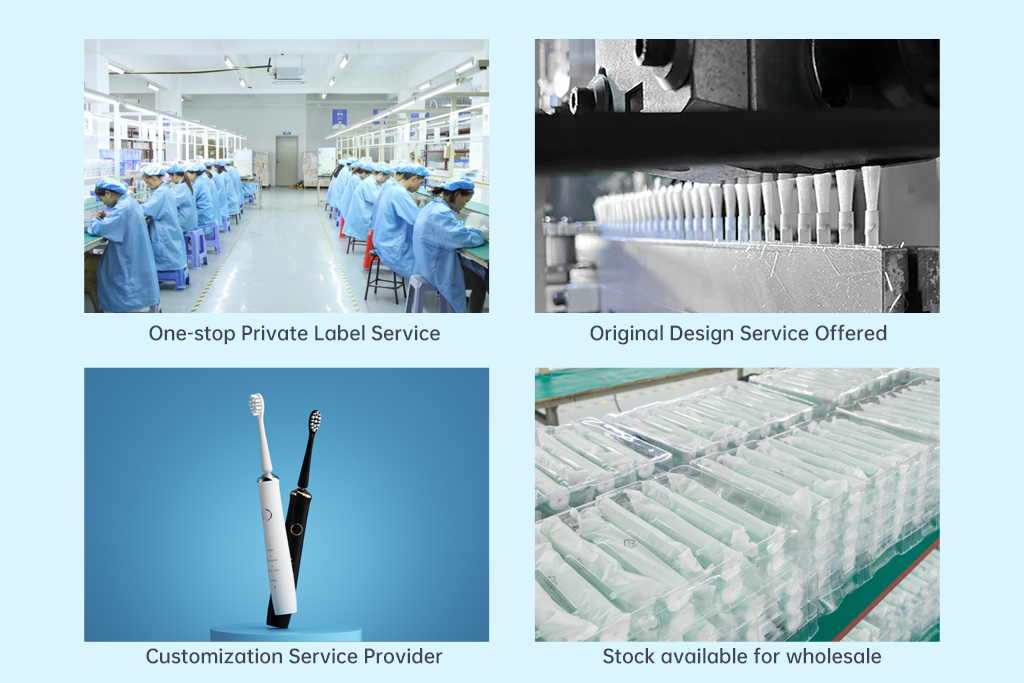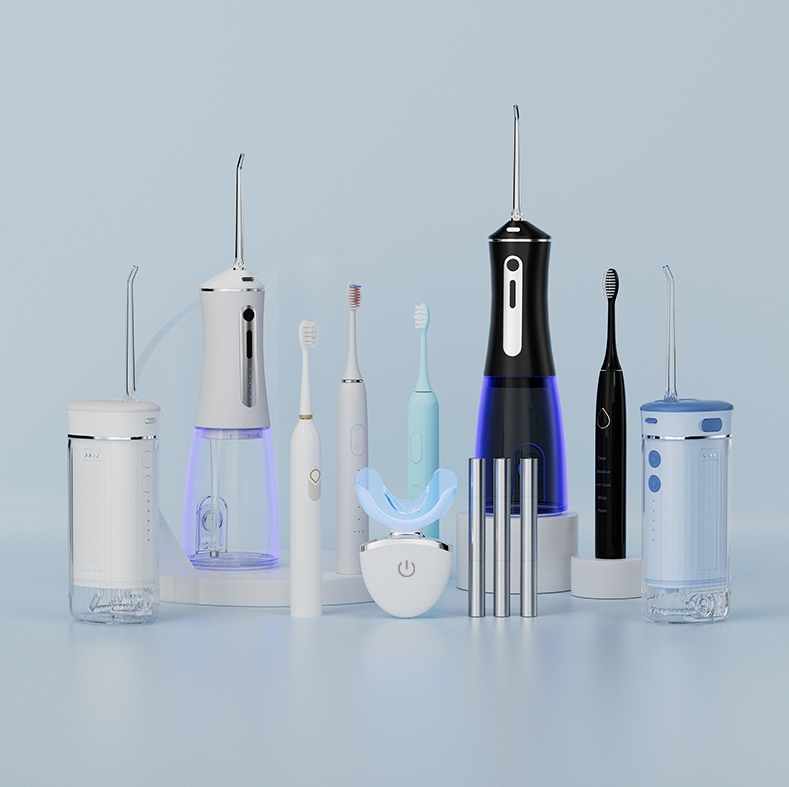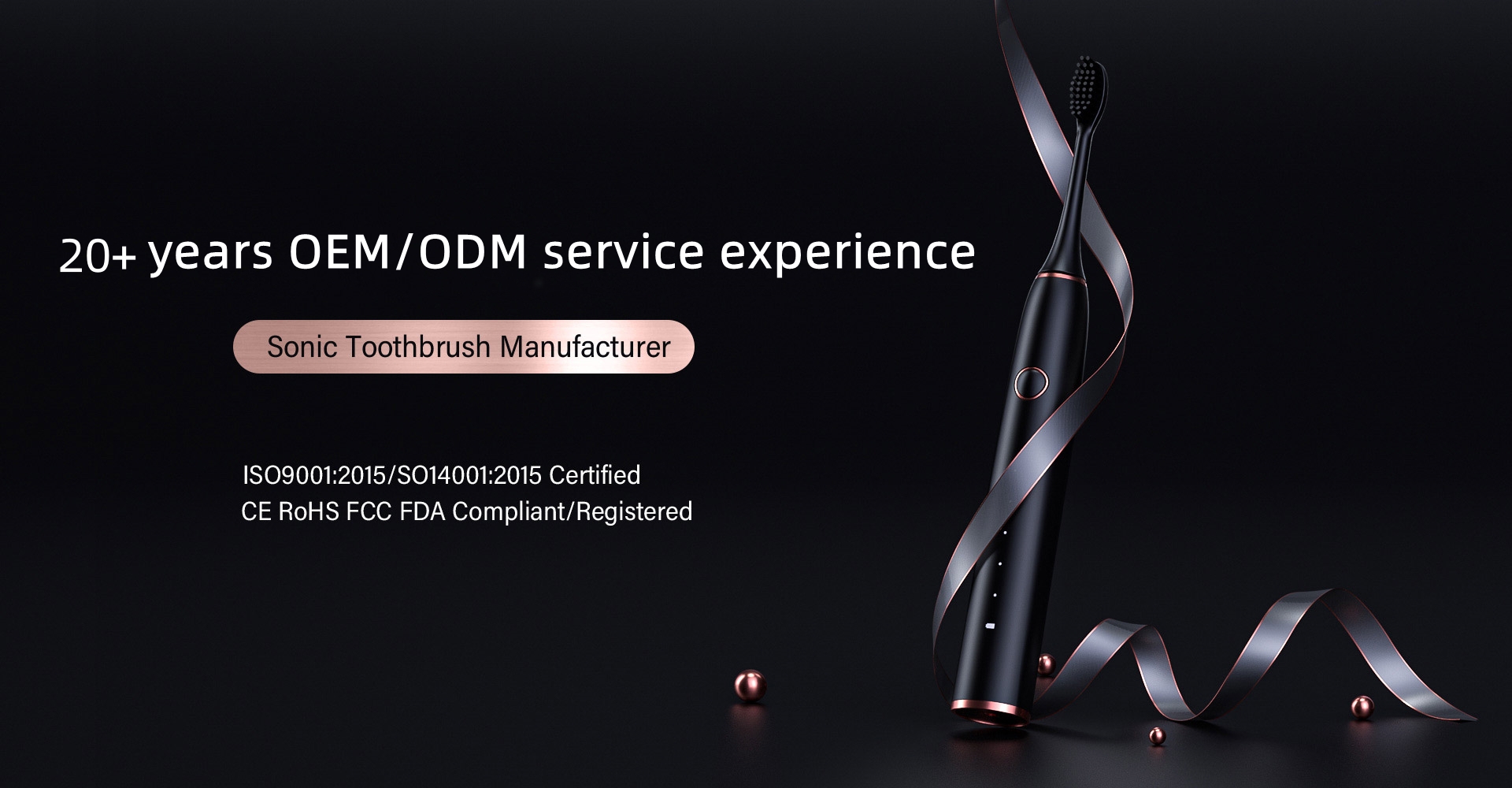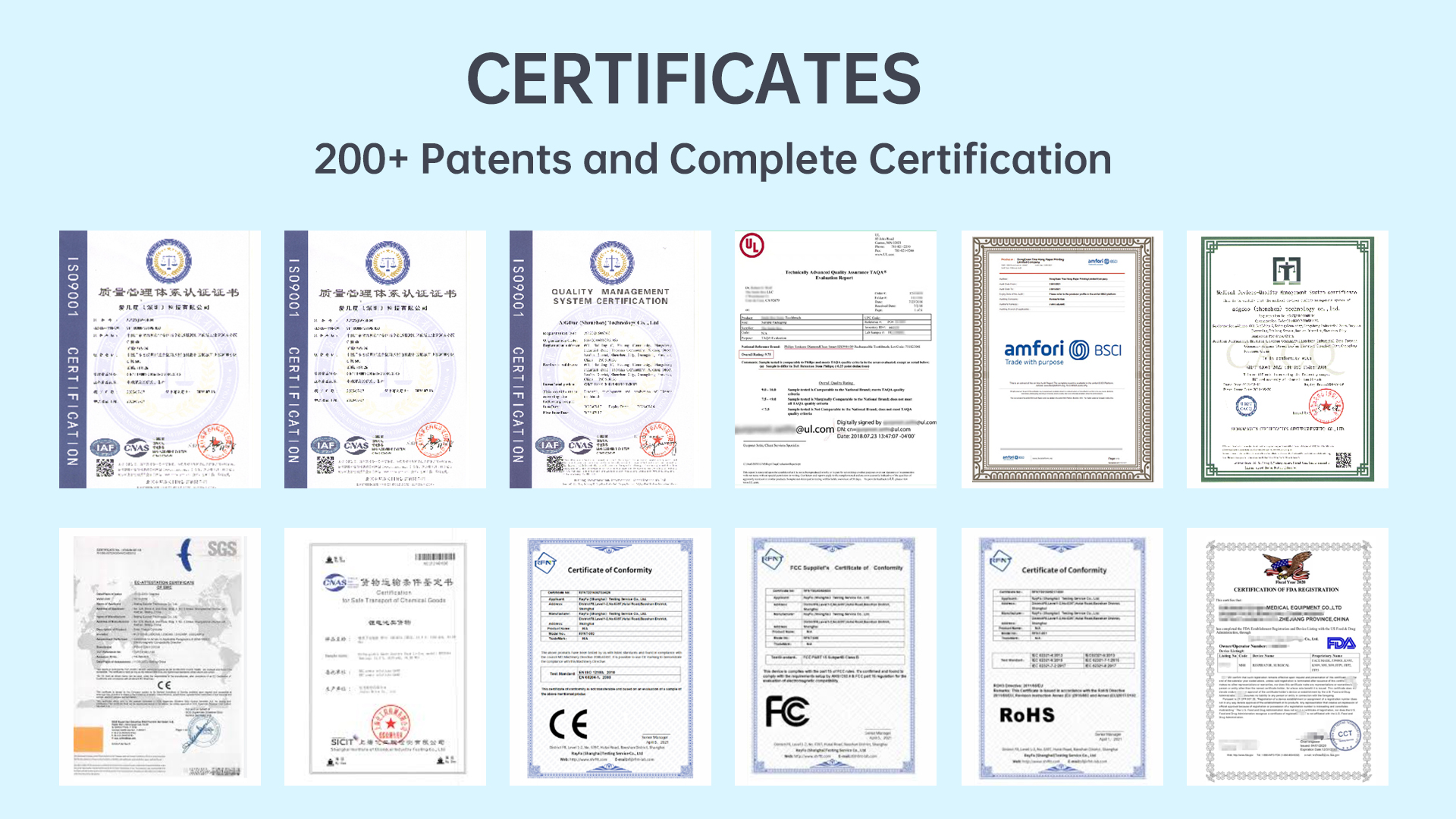As the global demand for electric toothbrushes continues to grow, selecting the right technology for your brand’s product line is more critical than ever. Whether you are launching a new oral care brand or expanding your existing portfolio, understanding the differences between sonic vibration and rotary vibration technology is essential for aligning with both market trends and user expectations. This technology comparison will explore the performance, user experience, and manufacturing implications of both electric toothbrush vibration technologies, helping brand owners make informed sourcing decisions. https://www.powsmart.com/product/electric-toothbrush/
In the electric toothbrush market, two main types of vibration mechanisms dominate: comparison of sonic vibration and rotary vibration technology.
Sonic Vibration uses high-frequency side-to-side movements—usually at 20,000 to 40,000 strokes per minute. This technology relies on fluid dynamics to clean beyond direct contact, reaching between teeth and along the gumline.
Rotary Vibration Technology involves oscillating or rotating brush heads, typically at a lower frequency (around 5,000 to 10,000 rotations per minute). These brushes often clean by direct mechanical action and are particularly effective at polishing tooth surfaces.
Understanding these foundational differences is the first step in evaluating product strategy and manufacturing options.
From a consumer perspective, both technologies offer benefits but cater to different user preferences.
Sonic Vibration provides a gentler brushing experience with broader fluid reach, making it suitable for users with sensitive gums or those seeking thorough cleaning without aggressive motion.
Rotary Vibration Technology, with its circular brushing action, tends to deliver a “cleaner feel” on the surface of teeth and may be more familiar to users transitioning from manual toothbrushes.
This distinction in performance and user experience can guide product segmentation for different markets and demographics.
Regarding to comparison of vibration, the design and feature possibilities also differ:
| Feature | Sonic Vibration | Rotary Vibration Technology |
| Stroke Speed | 20,000 – 40,000/min | 5,000 – 10,000/min (oscillations) |
| Brush Head Design | Elongated, slim | Small, round |
| Cleaning Mechanism | Sonic fluid dynamics + vibration | Mechanical rotation/oscillation |
| Noise Level | Typically quieter | Often louder |
| Gum Sensitivity Suitability | Better for sensitive gums | More intense pressure |
| Popularity in Premium Models | High | Common in entry to mid-range models |
Understanding these technical and user-oriented differences is critical when crafting your brand’s electric toothbrush manufacturing strategy.
From a production standpoint, the choice of technology affects design complexity, cost structure, and supply chain requirements.
Sonic Vibration Models require precision micro-motors and refined control chips to manage high-frequency vibrations. These components often increase production cost but allow for thinner, sleeker product profiles.
Rotary Technology models typically involve simpler motor mechanisms and fewer internal components, resulting in lower manufacturing cost and easier mass production at scale.
For brand owners, working with a factory that has specific expertise in either sonic or rotary mechanisms is crucial to ensure consistent product quality and reliability.
Choosing between sonic and rotary vibration is not just a technical decision—it’s a strategic branding choice.
For premium or professional-grade oral care lines, sonic vibration is often the preferred choice due to its high-performance image and superior cleaning reputation.
For mass-market or budget-conscious offerings, rotary vibration technology provides a cost-effective solution without compromising basic functionality.
A smart technology comparison should always take into account user needs, price point positioning, and regional preferences—especially when launching in diverse global markets.
In today’s competitive oral care market, the decision between sonic vibration and rotary vibration technology goes far beyond cleaning action. It touches every part of the product development process—from R&D and design to branding and manufacturing logistics.
For brand owners and OEM partners looking to choose the right oral care product, collaborating with an experienced and flexible electric toothbrush manufacturing partner is key. A manufacturer who understands both technologies can provide tailored recommendations, faster prototyping, and smoother scale-up—helping you meet your business and consumer goals.

How Do High-Quality Electric Toothbrushes Enhance the Brand Image of Oral Care?
.jpg)
Research on Consumers’ Preferences for the Functions and Prices of Electric Toothbrushes – From the Perspective of Suppliers
.jpg)
sonic electric toothbrush Mesa
.jpg)
Is POWSMART Rotating Oscillating Toothbrush’s Water Pressure Instability?

Does Black Electric Toothbrush ODM Face Handle Corrosion?
Why Dentist Consultations Mitigate Home Treatment Risks?

How to Find an Electric Toothbrush Factory with Strong Comprehensive Capabilities
Waterproof Performance vs. Temperature Sensitivity?

Can an Electric Toothbrush Help Relieve Tooth Sensitivity?
Can Charging Overheat Worsen Joint Leakage?
.jpg)
Best Smart Toothbrush Features for Bulk Buyers: A Supplier’s Guide

Does Magnetic Levitation Toothbrush Experience Brush Shedding?

Wavelength of Whitening Teeth Device Blue Light (460–490nm) and Red Light (620–660nm)Configuration Guide

How to Avoid Legal Risks in the OEM Process of Electric Toothbrushes

The Ultimate Checklist for Evaluating an Oral Care Product Manufacturer

What Services Can Electric Toothbrush Manufacturers Provide in Terms of After-Sales Service for Their Products?

electric toothbrush heads Ultra Soft

Customization Teeth Whitening Gel

Electric toothbrush heads Charcoal Infused-Diamond

electric toothbrush heads Regular Clean

electric toothbrush heads Deep Clean

electric toothbrush heads Charcoal Infuse-Round
.jpg)
Florida Electric Toothbrush – Powsmart PTR-C8

Private Label Whitening Gel
whstapp
whstapp
National Toll-Free Service Hotline
+86 755 86238638